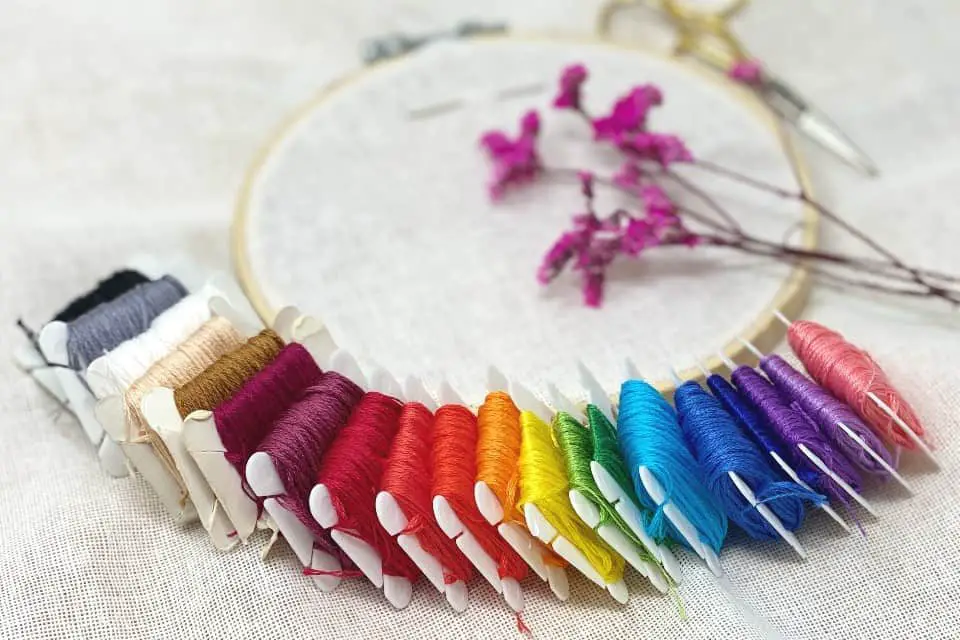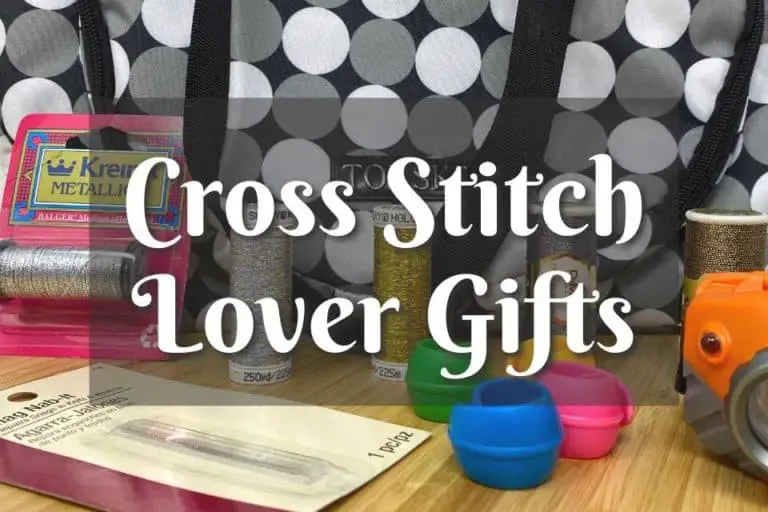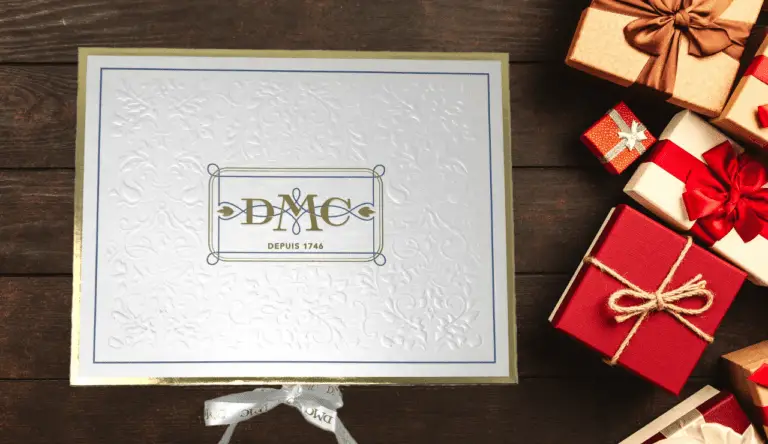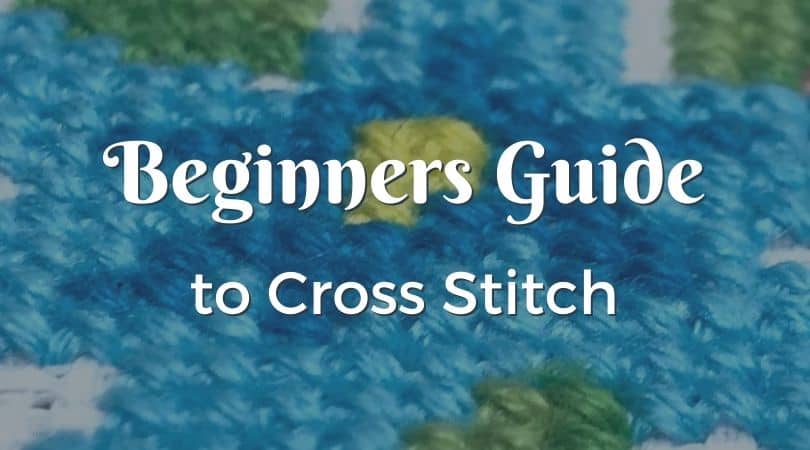- What is the best fabric for cross stitch?
- What is the best thread for cross stitch?
- What kind of needle do you use for cross stitch?
- What are the best cross stitch scissors?
- Cross Stitch Pattern
- Keep Projects Clean and Organized
- Good Lighting
- Do you need a hoop to cross stitch?
- Fun cross stitch supplies
- Where to buy cross stitch materials?
What supplies do I need to cross stitch?
Cross stitch is a wonderfully relaxing hobby that is simple and inexpensive to get started. You can definitely go overboard with all the fun stuff available, but you really need just a few things to get started.
The only must have cross stitch supplies you need to begin with are
- fabric
- thread
- needle
- scissors
- a pattern
- something to keep it all clean and organized
Anything else is extra, although additional tools and supplies can help make cross stitch easier and more fun!
Let’s dive deeper into the basics of the tools and materials needed for cross stitch.
1. Fabric: What is the best fabric for cross stitch?
For a beginner, 14-count aida cloth in a light color is the best choice as your first cross stitch fabric. Aida cloth is a cotton fabric that basically looks like a grid, with obvious “fabric squares” in which to stitch your crosses.
The “count” in aida cloth indicates how many stitches fit in one linear inch. 14 count means that 14 cross stitches will fit along one inch of that fabric. The higher the count, the smaller the stitches. Each stitch would have to be smaller to fit more of them in an inch.
Other common fabrics are evenweave and linen. They are a bit more difficult to stitch with because they aren’t woven to form a grid.
2. Thread: What is the best thread for cross stitch?
Six-stranded cotton embroidery floss is what is most commonly used in cross stitch. A colorfast brand is best, like DMC or Anchor, because the dyes won’t bleed into the fabric when you wash it. Floss bundles can be a good choice for popular colors and give you more bang for your buck.
If you already have a pattern in mind, the pattern will tell you which colors to choose.
Get fancy with specialty threads like satin floss and metallics. They can help you create a different look and texture, but they are more challenging to work with.
3. Needle: What kind of needle do you use for cross stitch?
The best needle for a beginner cross stitcher is a tapestry needle size 24. These have long eyes, making it easier to thread multiple strands of floss. Tapestry needles also have a blunt tip that helps to prevent splitting the woven threads of your fabric.
If you’ve ever been to an embroidery shop or hobby store, you’ll see dozens of different types of needle. As you stitch more, you can try out other types of needles to see which better suits your stitching style. For instance, if you have a nickel allergy, you might try gold coated needles.
4. Scissors: What are the best cross stitch scissors?
For cross stitch, you ideally should have 2 different types of scissors.
The first scissors you need for cross stitch are fabric scissors. These are very sharp and should only be used on textiles to prevent them from getting dull. Dull scissors don’t cut fabric very well and are likely to induce bouts of swearing! You could save a few bucks and use something like regular kitchen shears for fabric, so long as they are clean and sharp.
The second kind of scissors you need for cross stitch are embroidery scissors. These are much smaller than fabric scissors, maybe one-third the size. They should also be very sharp with a pointy end so you can get very close to you stitching when trimming tails of floss.
Cross stitch kits do not include scissors, so you’ll need to pick them up before you start.
5. Cross Stitch Pattern
I recommend for a beginner that you follow a counted cross stitch pattern. For beginners, look for a small, simple pattern that has whole cross stitches. Back stitch and fractional stitches are more advanced.
A decent pattern will show you what the project looks like when finished, provide a pattern grid and a list of all the colors you need to complete the pattern. The center of the pattern should be marked with bright lines, usually red, or arrows. Notorious Needle patterns provide all this and more, in both color and black and white versions for you to download or print.
6. Cross Stitch WIP Bag or Organizer
The last item that is absolutely necessary for cross stitch is some kind of container to keep it all together and organized. This can be anything from a simple tote bag that you already have around the house, to a dedicated embroidery box.
A lot of stitchers use WIP (Work in Progress) bags for each project. If you enjoy working on more than one cross stitch design at a time, using a WIP bag will keep the floss and fabric clean when you’re not stitching on it.
7. Good Lighting
You only get two eyes, take good care of them! Make sure you stitch in a well-lit area. Not only will this help protect your eyes and prevent headaches, but it could save your stitching, too! There have been many mornings that I’ve picked up my stitching when it looked like something a cat was playing with. Save yourself the hassle of picking out mistakes and get yourself a good lamp.
Do you need a hoop to cross stitch?
You do not NEED an embroidery hoop to cross stitch. Lots of people “stitch in hand” – including me!
Aida cloth is starched to make it stiff enough to stitch without a hoop, so it’s not necessary to use one.
This is considered controversial in stitching circles because some stitchers insist that you must use a hoop when starting out. But I say there are no “rules” in cross stitch and you should experiment to see what you like.
Many beginners find it easier to stitch in a hoop because the fabric taut. It helps keep the stitches even and prevents the fabric from puckering under the stitches.
Embroidery hoops are inexpensive and easy to find, so feel free to give it a try!
What size cross stitch hoop should I use?
Your first pattern should be a small one, and this will make it easy to find a hoop. Get an embroidery hoop that is about 2-inches larger than the largest dimension of your cross stitch pattern. So if you’re stitching a pattern that will be 6-inches wide when finished, get an 8-inch embroidery hoop.
Fun Cross Stitch Stuff!
- Needle threader – helps thread your needle
- Needle minder – a pretty magnet so you don’t lose your needle
- Floss organizer tools – avoid the tangled mess!
- Project Organizers – keeps all your supplies in one place
Check out the Notorious Needle Resources page for more recommendations on supplies and tools, and some cross stitch pattern books.
Where to buy cross stitch materials?
A lot of the links in this article above will take you to Amazon, which is really convenient! Other places online to find cross stitch supplies are Etsy, eBay, Facebook Marketplace and there are some great ideas on Pinterest.
You can also buy supplies for cross stitch from chain hobby stores like Michael’s and Joann’s Fabrics in the US, and local needle shops (my personal favorite!) Sometimes estate sales and thrift stores have large stashes for sale, and thrift stores often have the most unique frames.
Keeping some cross stitch supplies on hand is a great idea for beginners to make it easy for you to pick up and start stitching whenever you want. Purchasing a small selection of tools and materials for cross stitch is very inexpensive. You’ll learn quickly and soon start sharing your beautiful needlework.















